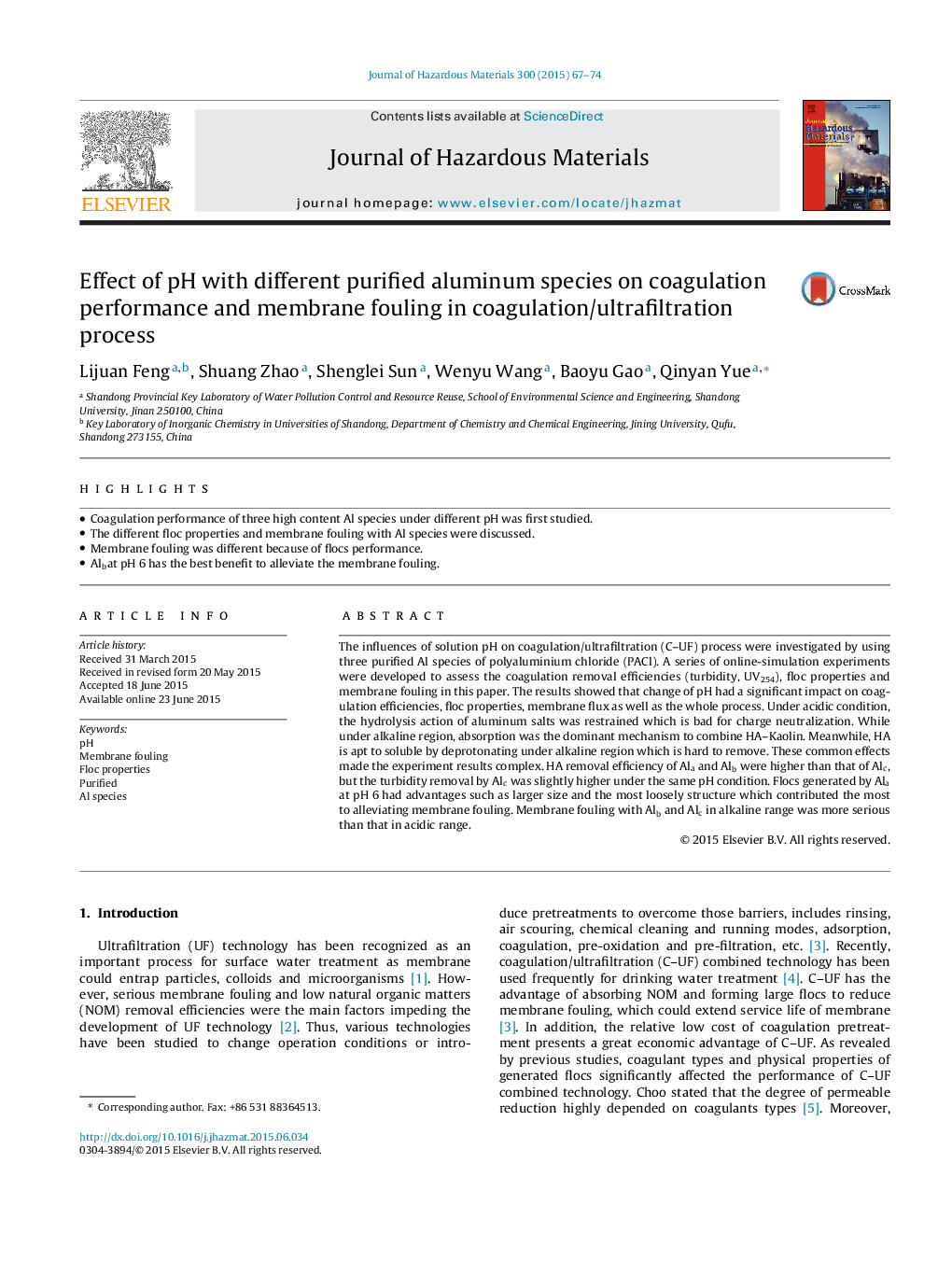| Article ID | Journal | Published Year | Pages | File Type |
|---|---|---|---|---|
| 575674 | Journal of Hazardous Materials | 2015 | 8 Pages |
Abstract
The influences of solution pH on coagulation/ultrafiltration (C-UF) process were investigated by using three purified Al species of polyaluminium chloride (PACl). A series of online-simulation experiments were developed to assess the coagulation removal efficiencies (turbidity, UV254), floc properties and membrane fouling in this paper. The results showed that change of pH had a significant impact on coagulation efficiencies, floc properties, membrane flux as well as the whole process. Under acidic condition, the hydrolysis action of aluminum salts was restrained which is bad for charge neutralization. While under alkaline region, absorption was the dominant mechanism to combine HA-Kaolin. Meanwhile, HA is apt to soluble by deprotonating under alkaline region which is hard to remove. These common effects made the experiment results complex. HA removal efficiency of Ala and Alb were higher than that of Alc, but the turbidity removal by Alc was slightly higher under the same pH condition. Flocs generated by Ala at pH 6 had advantages such as larger size and the most loosely structure which contributed the most to alleviating membrane fouling. Membrane fouling with Alb and Alc in alkaline range was more serious than that in acidic range.
Related Topics
Physical Sciences and Engineering
Chemical Engineering
Chemical Health and Safety
Authors
Lijuan Feng, Shuang Zhao, Shenglei Sun, Wenyu Wang, Baoyu Gao, Qinyan Yue,
